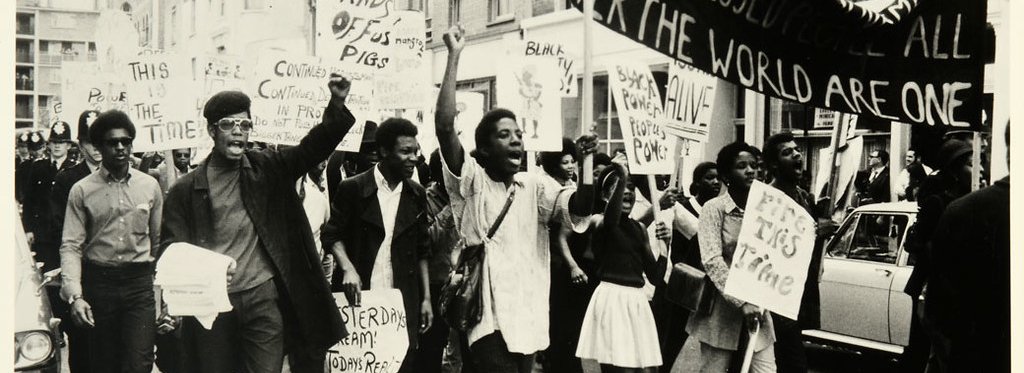| 6 mins read
The field of British political history is ‘methodologically white’; that is, its practitioners largely reflect on the world in a way ‘that fails to acknowledge the role played by race in the structuring of that world, and the ways in which knowledge is constructed and legitimated within it.’ All too often it struggles even to see a politics of race in operation.
Black history and critical studies of race offer an antidote to ‘methodological whiteness’ and renders the politics of race visible. The perspectives of black thinkers, activists and ‘ordinary’ black people are important because they did not have the privilege of not seeing the politics of race; they experienced British citizenship and society differently because of the ways they were racialised by the state, other institutions, and society.
‘Keep Britain white’: white supremacist organisations in postwar Britain
Discussion of white supremacist organisations in studies of British political history after 1945 focuses largely on their derisory performance in elections. For example, Oswald Mosley, representing his Union Movement (UM), stood as a candidate in North Kensington for the 1959 election. He lost badly and failed to secure his deposit, but this fails to capture the threat the UM posed to black Britons.
UM activists feature in accounts of the 1958 riots, particularly with reference to the subsequent fatal stabbing of an Antiguan carpenter named Kelso Cochrane by a group of white youths in North Kensington in May 1959. The case was never solved, but rumours suggested the killer had been a UM member. The field of British political history has historically not acknowledged the scale, impact or prevalence of instances of racist violence like Cochrane’s murder.
The response of Britain’s black community to Cochrane’s murder offers some suggestions for how historians should understand racist political violence. In response, Claudia Jones, editor of The West Indian Gazette, along with other activists, and organisations mounted a defence campaign. Their campaigns offer historians a joined-up understanding of how race operated in British politics. These activists did not conceive of white supremacist street racism as separate from ‘spontaneous’ acts of racism by white Britons or from the British state’s attempts to disenfranchise Commonwealth citizens of colour.
Black Power and everyday ‘fascism’
The black political press of the 1970s contains important insights for the political historian. Its contents speak to a very different, racialised experience of British politics and society than that experienced by white citizens. It conveyed the scale and unrelenting frequency with which black Britons faced racist violence, something rarely covered by the popular press. They understood individual incidents as part of a broader politics of race. As the Black Panther Movement’s Black People’s News Service outlined: ‘institutional and individual forms of racism always work together. One cannot exist without the other.’
Black Power activists stressed the actual connections between white supremacist organisations and wider society. Their newspapers carried warnings about NF members working in schools, prisons, and the police. This suggests a literal continuum of racist repression in which the extra-parliamentary racism of the NF merged with the institutional racism of the British state and the prejudices of wider society.
Black Power organisations and periodicals advanced a joined-up political analysis of racism in Britain. Their point was that, regardless of whether racist violence was carried out by uniformed agents of the state, NF activists, or the public, its meaning and effect was the same. These acts collectively (re-)asserted a conception of Britain as a ‘white’ space. Contained within the black periodical press, then, is a very different political history of Britain.
White victimhood: white supremacist organisations in recent political history
Where political scientists and historians have dealt with British fascism in contemporary history, they paid little attention to the broader politics of race. The British National Party (BNP) serves as an example. Historians and political scientists have refrained from engaging with critical studies of race and whiteness in their discussions of the BNP, despite their reworking of older themes in white supremacist ideology, and have instead focused on poor electoral performance. Yet, this neglects to consider why white supremacist organisations remain such a resilient feature of British politics. The survival of the British white supremacist movement in the absence of electoral success reflects the perpetual allure of its favourite themes: on the one hand, a desire to (re-)establish white supremacy and, on the other, a lament of white victimhood.
White supremacists do not need to win power to disfigure the political scene. The present-day preoccupation with the plight of the so-called ‘white working class’ is a mutation of older narratives of white victimhood, whilst the 1959 murder of Kelso Cochrane and the 1993 murder of Stephen Lawrence show the danger that white supremacist organisations pose to black Britons. With this in mind, British political history stands to gain new perspectives from black history and critical studies of race, utilising these to re-evaluate the place of white supremacist organisations in British politics across the twentieth century and into the early twenty-first century.
Need help using Wiley? Click here for help using Wiley

